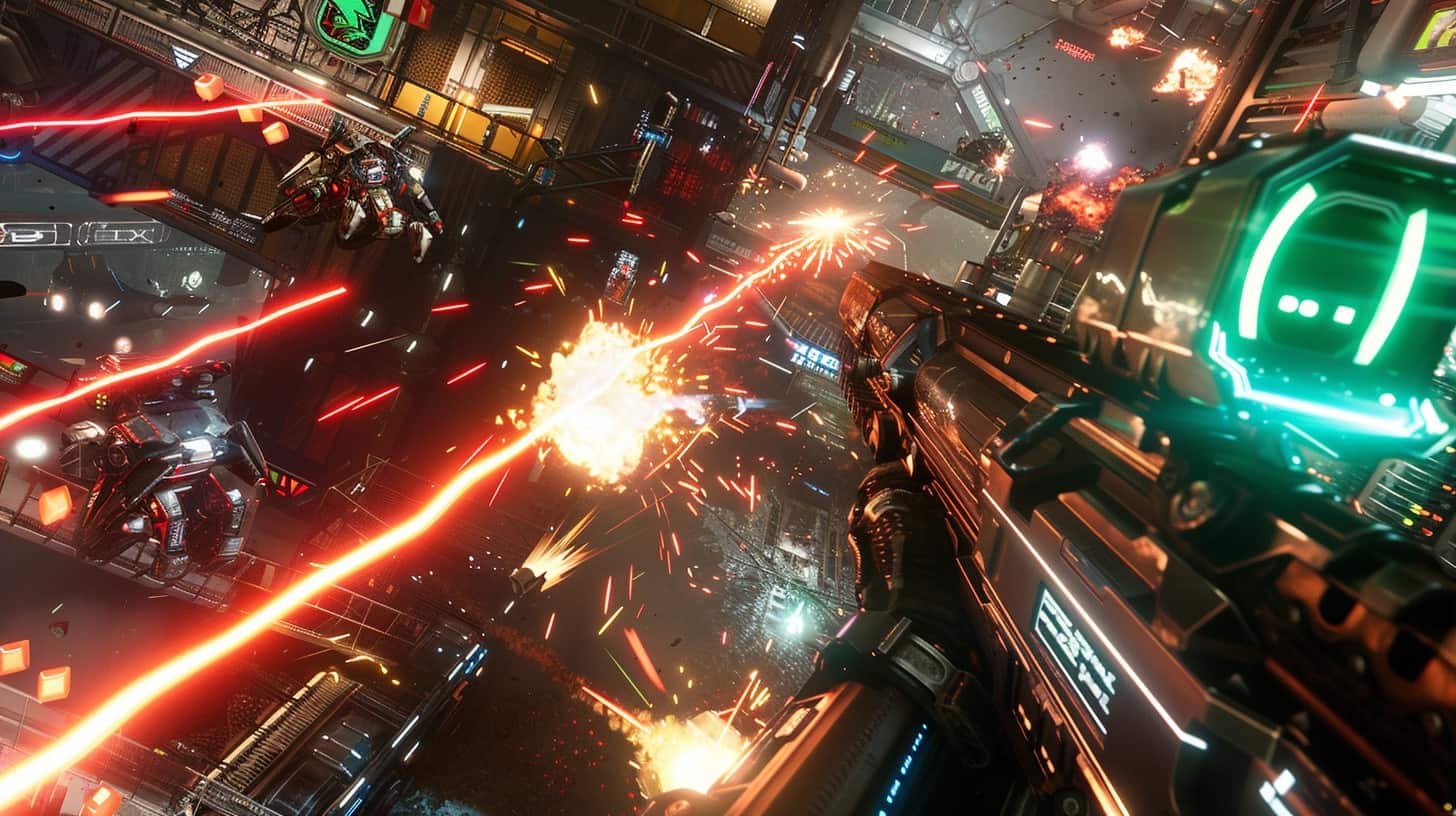PvP in gaming ignites fierce competition and strategic mastery. It’s where players clash directly, testing skills against human opponents. 3 This player-versus-player combat forms the core of many popular online games, from shooters to MMORPGs.
I’ve spent years analyzing PvP mechanics across various genres. My research reveals that PvP offers unique thrills and challenges compared to PvE gameplay. 1 Ready to explore the world of competitive gaming? Let’s uncover the secrets of PvP success. 2
Key Takeaways
PvP stands for Player versus Player, where gamers compete directly against each other in real-time battles, offering unique thrills compared to PvE (Player versus Environment) gameplay.
PvP battles come in two main types: synchronous (real-time) and asynchronous (turn-based), each offering different gameplay experiences and strategic challenges.
Ranking systems in PvP games, such as Elo and TrueSkill, match players of similar skill levels and provide motivation through competitive rewards and prestige.
Popular PvP modes include duels, team deathmatch, capture the flag, battle royale, and MOBAs, each requiring different strategies and skills.
PvP attracts various player types, from competitive thrill-seekers and strategic masterminds to social gamers and casual competitors, offering diverse experiences for different preferences.
Table of Contents
Exploring PvP in Video Games
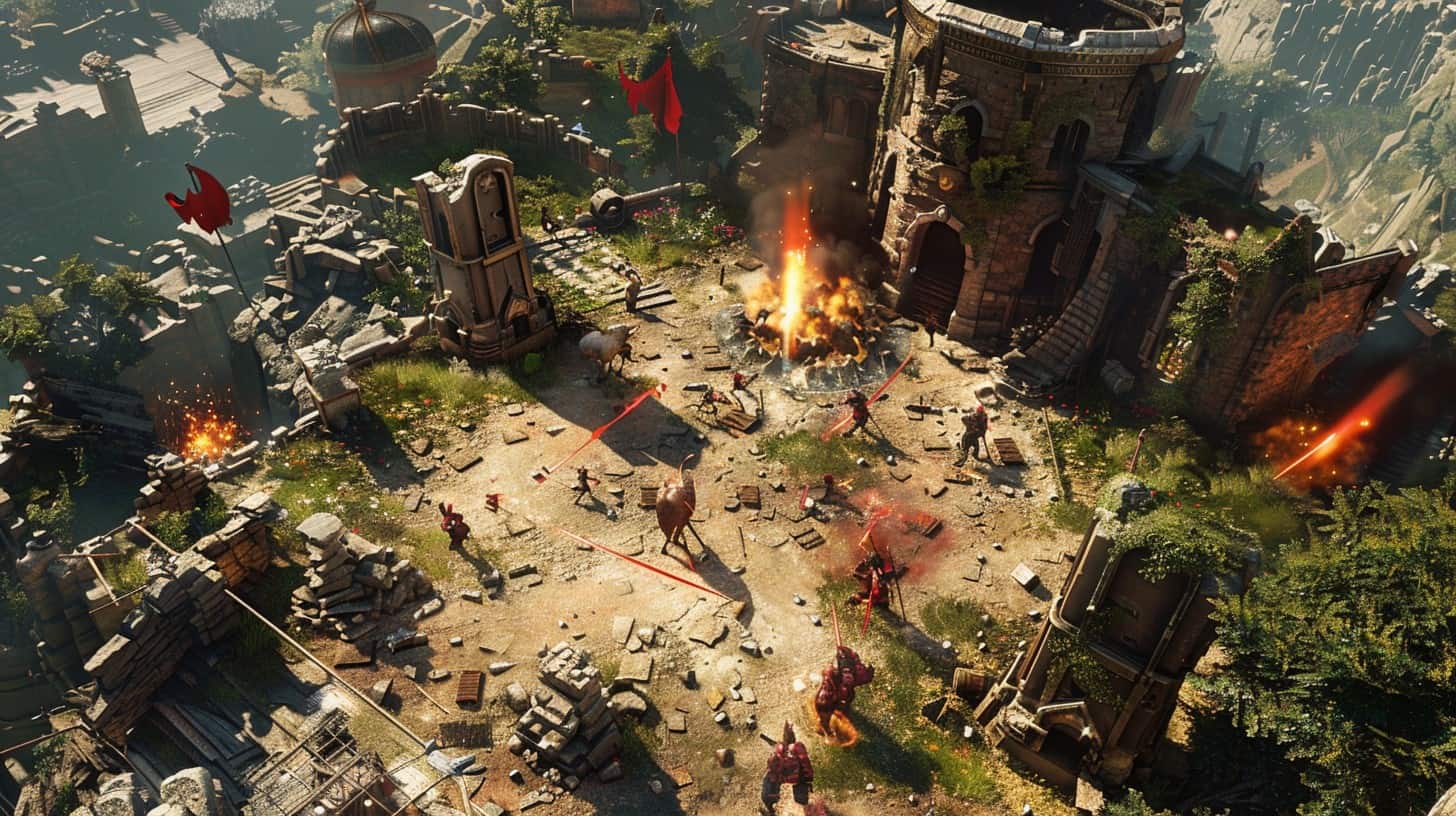
PvP in video games pits players against each other in direct combat. Shooter games often feature intense PvP battles, where skill and strategy determine the victor.
Synchronous vs. Asynchronous PvP Battles
PvP battles come in two main flavors: synchronous and asynchronous. Each offers unique gameplay experiences for competitive gamers. 1
| Synchronous PvP | Asynchronous PvP |
|---|---|
| Real-time combat | Turn-based or time-delayed actions |
| Immediate decision-making | Strategic planning |
| Fast-paced, intense battles | Slower, more thoughtful gameplay |
| Requires dedicated play sessions | Flexible for busy schedules |
| Examples: FPS games, MOBAs | Examples: Card games, strategy games |
Some games offer both types of PvP, catering to different player preferences. The choice between synchronous and asynchronous battles shapes the overall gameplay experience. 2 Next, we’ll explore the appeal of PvP in gaming.
The Appeal of PvP in Gaming
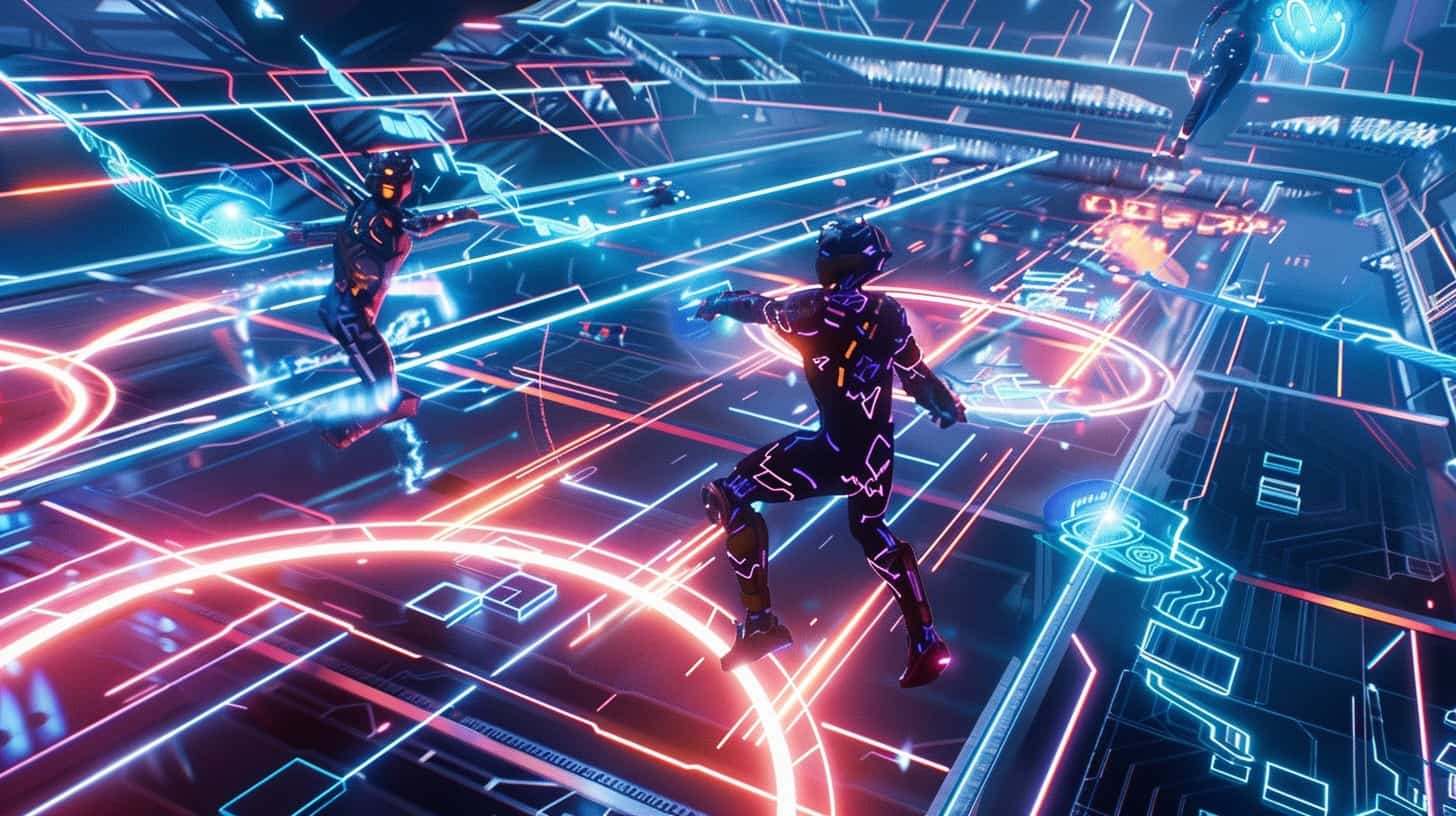
PvP in gaming offers a rush of adrenaline and mental challenge. It pits player against player in real-time combat… Want to know more about why gamers love PvP? Keep reading!
Competitive Excitement
PvP battles ignite fierce competition among gamers. Players test their skills, reflexes, and strategic thinking against real opponents. 3 This unpredictability adds a thrilling element, similar to the excitement found on top online casino sites like Gamba.
Gamers vie for higher rankings on leaderboards, motivating them to improve constantly.
PvP is the ultimate test of a gamer’s mettle. 1
Rewards like exclusive items and in-game currency further fuel the competitive spirit. Many players form teams, fostering community and friendships through intense matches. 1 The adrenaline rush of outsmarting human opponents keeps gamers coming back for more PvP action.
Strategic Complexity
PvP games demand intricate strategic thinking. Players must analyze opponents’ strengths, weaknesses, and potential moves. This complexity involves resource management, positioning, and timing – skills that evolve with experience.
Ranking systems in PvP reflect a player’s tactical prowess, rewarding those who master the game’s nuances. 2
Strategic depth varies across PvP modes. Asynchronous battles require foresight and planning, while synchronous matches test quick decision-making. Team-based PvP adds layers of coordination and role-specific strategies.
Mastering these elements separates novices from experts in the competitive gaming landscape. 4
Comparing PvP to PvE
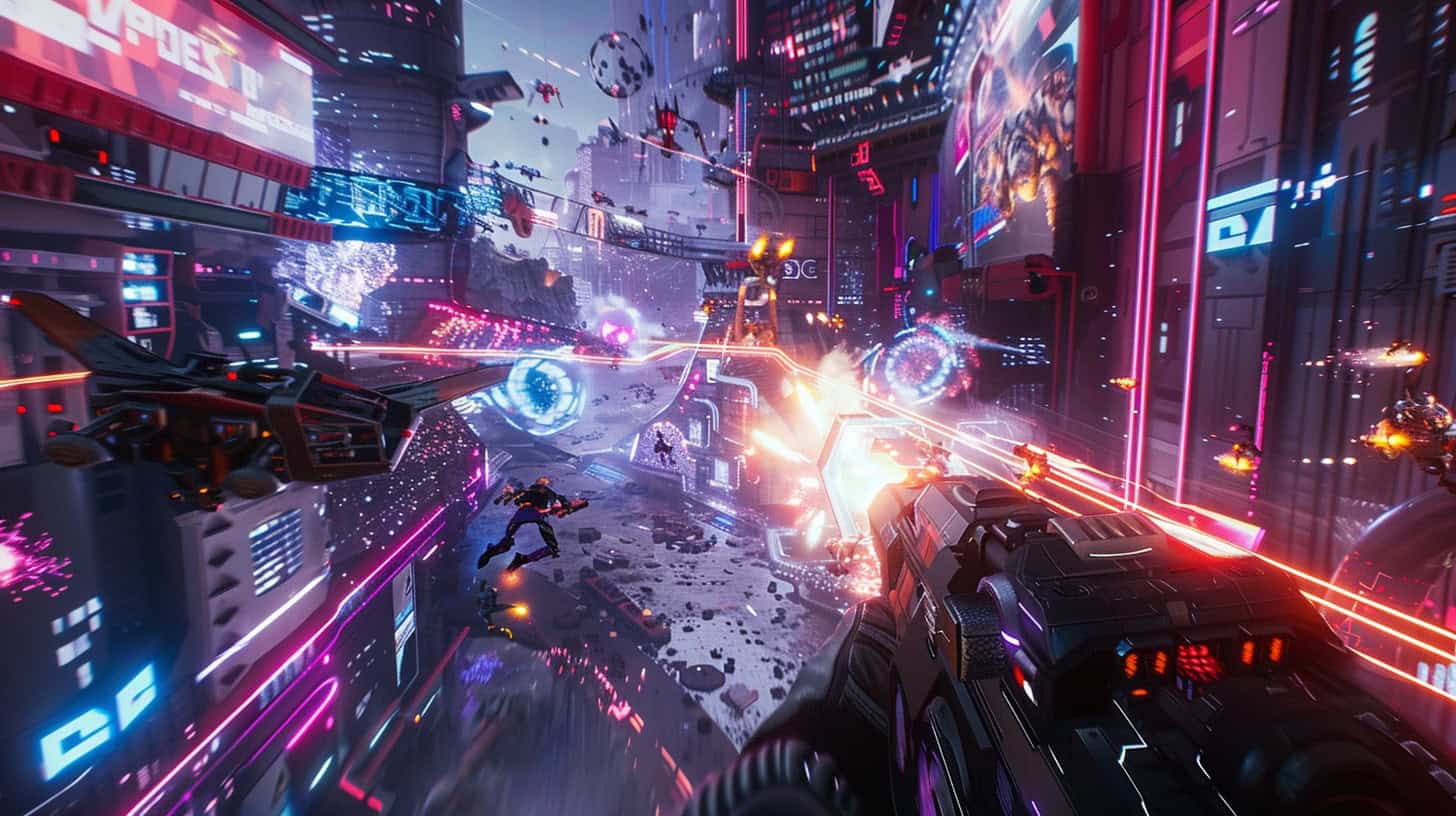
PvP pits players against each other, while PvE focuses on battling computer-controlled foes… curious about the key differences in these gaming modes? Keep reading to learn more ‘gamer lingo‘ and uncover the unique thrills of each!
Definition of PvP and PvE
PvP (Player versus Player) and PvE (Player versus Environment) represent two distinct gaming modes. In PvP, gamers compete directly against each other, testing skills and strategies in real-time battles.
PvE pits players against AI-controlled enemies, often requiring teamwork to overcome challenges.
PvP is the ultimate test of skill, while PvE offers cooperative adventures against digital foes. 5
These modes cater to different preferences. PvP thrives on competitive excitement, with ranking systems and various battle formats. PvE focuses on storytelling, character development, and collaborative gameplay against computer-controlled opponents. 6
Key Differences
PvP and PvE offer distinct gaming experiences. PvP pits players against each other, while PvE focuses on battling computer-controlled enemies. Here’s a breakdown of their key differences:
| Aspect | PvP (Player vs Player) | PvE (Player vs Environment) |
|---|---|---|
| Opponent | Real human players | AI-controlled enemies |
| Challenge Level | Highly unpredictable, often more challenging | Predictable patterns, scripted behaviors |
| Skill Development | Rapid improvement through competition | Gradual progression through repetition |
| Social Aspect | Direct interaction with other players | Limited to cooperative gameplay |
| Reward System | Often includes rankings and competitive rewards | Usually story-driven or loot-based rewards |
| Gameplay Variety | High variability due to human opponents | Can become repetitive over time |
| Stress Level | Often higher due to competitive nature | Generally lower, more relaxed experience |
PvP games offer a personal test of skills against real opponents. They feature ranking systems to match players of similar abilities. This creates an exciting, competitive environment not found in PvE games. 78
Player Preferences and Experiences
Player preferences and experiences in PvP gaming vary widely. Gamers gravitate towards different aspects of player-versus-player combat based on their individual tastes and skills.
- Competitive thrill-seekers: These players crave the adrenaline rush of facing human opponents. They enjoy:
- Testing their skills against unpredictable human strategies
- The satisfaction of outmaneuvering real players
- Climbing leaderboards and earning bragging rights. 9
- Social gamers: PvP attracts those who value community interaction. They appreciate:
- Forming alliances and guilds with like-minded players
- Coordinating team strategies in multiplayer battles
- Building friendships through shared competitive experiences. 6
- Strategic masterminds: Some players relish the complex decision-making in PvP. They focus on:
- Analyzing opponent patterns and exploiting weaknesses
- Developing innovative tactics to gain an edge
- Adapting strategies on-the-fly during intense matches
- Progression-oriented players: These gamers enjoy PvP as a means to advance. They prioritize:
- Earning unique rewards and gear through PvP victories
- Unlocking special abilities or characters exclusive to PvP modes
- Gaining experience points faster than in PvE content
- Casual competitors: Not all PvP players seek hardcore experiences. Some prefer:
- Quick, accessible matches in mobile or browser games
- Low-pressure environments with minimal consequences for losing
- Enjoying the social aspect without intense competition
Varieties of PvP Gameplay
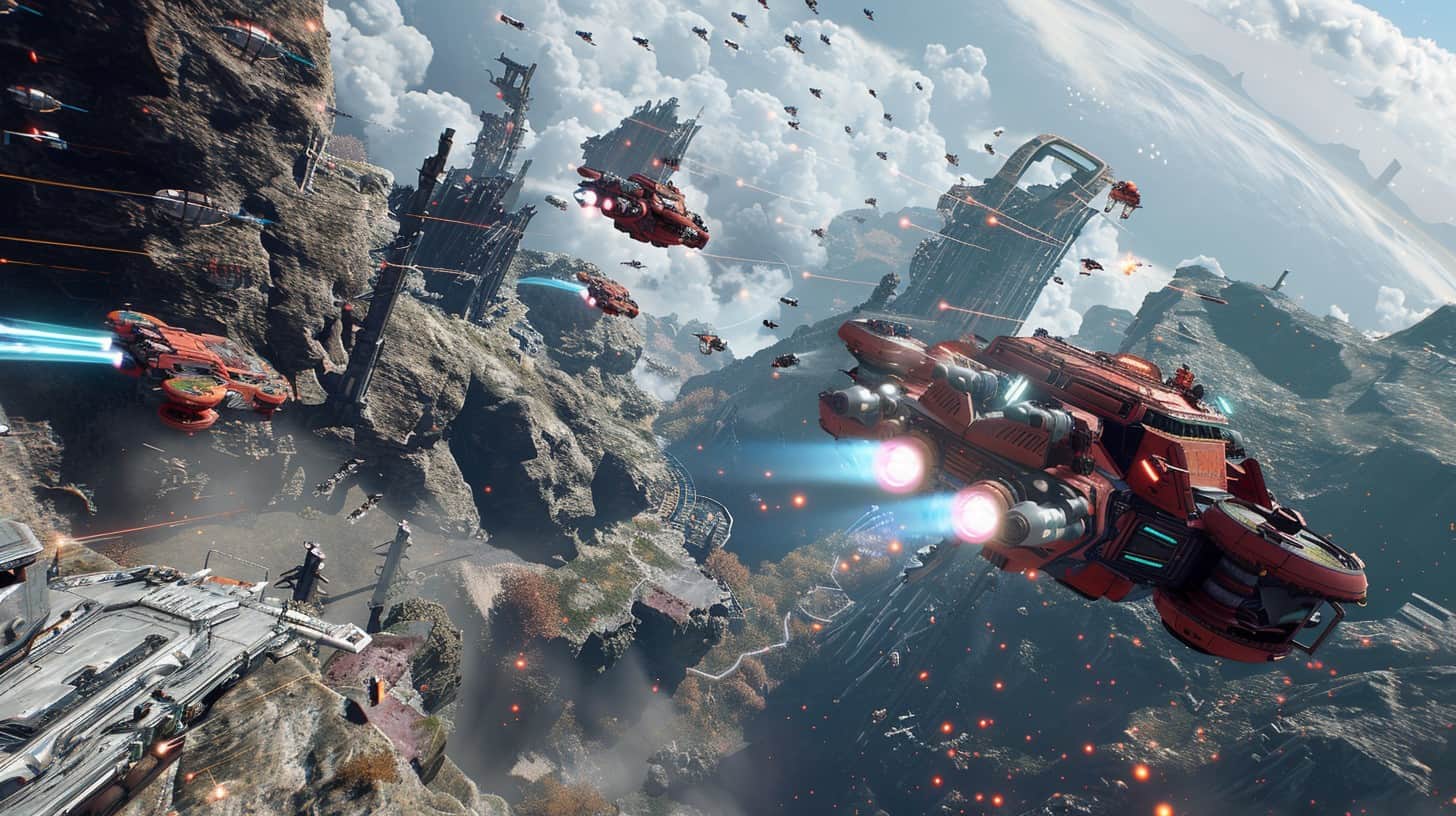
PvP gameplay comes in many flavors. Players can duke it out in team deathmatches or face off solo in battle royale modes.
PvP Ranking Systems
PvP ranking systems add a competitive edge to gaming, much like online casinos. These systems assign players a rank or rating based on their performance in matches. Elo, TrueSkill, and Glicko are popular ranking algorithms used across various games.
Players climb the ladder by winning matches, with higher ranks offering greater prestige and often exclusive rewards. Some games use tiers (Bronze, Silver, Gold) while others employ numerical ratings. 2
Ranking systems vary significantly between games. League of Legends uses a tier-based system with divisions, while Chess.com employs a numerical Elo rating. Counter-Strike: Global Offensive combines skill groups with a hidden MMR (matchmaking rating).
These systems aim to create fair matches by pitting players of similar skill levels against each other. Higher stakes in ranked play often lead to less problematic behavior among adults compared to casual modes or adolescent players. 10
Different PvP Modes
PvP modes offer diverse challenges for competitive gamers. Here’s a breakdown of popular PvP formats:
- Duels: One-on-one battles where players test individual skill. Often seen in fighting games or MMORPGs.
- Team Deathmatch: Groups compete to rack up the most kills within a time limit. Common in first-person shooters.
- Capture the Flag: Teams aim to steal the opponent’s flag while defending their own. Requires strategy and teamwork.
- Battle Royale: Large groups of players fight to be the last one standing. Popularized by games like Fortnite and PUBG.
- Arena Combat: Small teams face off in enclosed spaces. Features quick, intense battles with respawns.
- Open World PvP: Players can attack each other anywhere in the game world. Creates unpredictable, high-stakes encounters. 11
- MOBA: Two teams of unique heroes battle to destroy the enemy base. Combines strategy, teamwork, and individual skill.
- King of the Hill: Teams compete to control a specific area for the longest time. Encourages aggressive play and area control.
- Siege Warfare: Large-scale battles where teams attack or defend fortifications. Often seen in medieval or fantasy settings.
- Racing: Players compete to finish a course first. Can include combat elements in some games. 2
References
- ^ https://medium.com/@amadionyemuche10/the-thrill-of-the-fight-understanding-pvp-in-video-games-ce387c71df62
- ^ https://dreams.quest/post/what-is-pvp-in-gaming-pvp
- ^ https://medium.com/@shadadrabbi22/title-the-thrill-of-pvp-unleashing-competitive-spirit-in-gaming-4c75c75292b2
- ^ https://medium.com/@tisarer948/title-the-art-of-player-vs-player-pvp-navigating-the-thrills-and-challenges-d2e913bab907
- ^ https://simplyirfan.com/pvp-meaning-and-pvp-vs-pve/ (2024-02-29)
- ^ https://plarium.com/en/blog/pvp-and-pve/ (2023-10-25)
- ^ https://blackshellmedia.com/2016/05/25/pve-vs-pvp-study-frustration-combination/ (2016-05-25)
- ^ https://forums.daybreakgames.com/dcuo/index.php?threads/whats-the-different-between-pve-and-pvp.157077/ (2013-05-31)
- ^ https://steamcommunity.com/app/346110/discussions/0/1750147465520144892/ (2020-01-31)
- ^ https://www.ncbi.nlm.nih.gov/pmc/articles/PMC3304244/
- ^ https://medium.com/@hasansheikh6907/understanding-player-vs-player-pvp-a-deep-dive-into-competitive-gaming-6384f2993f96
